1,378 views Add as favorite
Two weeks ago, the Low Carb Denver 2019 conference came to an end. Here’s our third posted presentation, after Gary Taubes and Dr. Andreas Eenfeldt, and this one is with the amazing Dr. Sarah Hallberg.
What is the best approach to type 2 diabetes reversal? In this presentation, Sarah takes us on a deep-dive into the matter and she puts studies and evidence under the microscope.
Don’t miss this insightful and inspiring video.
Table of contents
2:45 The problem — diabetes
4:50 What can we do for type 2 diabetes reversal?
14:16 Virta Health type 2 diabetes trial
23:10 The DIRECT trial vs. Virta Health trial
29:56 Low carb now — Standard of care
Transcript
Dr. Sarah Hallberg: Thank you so much, thank you, Ken, how can I start without thanking Jeff and Rod? I remember it was just a few years ago, we were in this tiny room. Was anyone there? This tiny room in Breckenridge and here we are today. So thanks to all their hard work. And I am a so honored to be here with everyone today. So we’re going to talk about type 2 diabetes.
And actually I hope that when I’m done here I can convince everyone that low-carb does work for type 2 diabetes and type 2 diabetes reversal, but I’m not going to work that hard on that fact. But that is not the only way and that all of us who care for patients do need to understand that there are other ways for people to go about the idea of reversal.
And we need to always remember that the ultimate choice about what a patient does for their health is theirs. And what we– so important, I think it’s lost sometimes along the way, but our jobs are to be educated on all the options and to really be able to have a patient centered discussion. Now I fully believe, or I wouldn’t be here today, that most people will choose low carbohydrate as an option because of all the reasons we know.
But not everyone will and that’s okay. So let’s go through it, first my disclosures. I do work for Virta Health and I am an advisor at Atkins and I have a major intellectual bias. Major. And why do I have this intellectual bias? Because I have cared for thousands of amazing people who have had life-changing results. And you know what? You can’t ignore it.
So I declare it and I hope that we can get to a place in medicine where we can be forthright with our intellectual biases, because it’s the one that is the most powerful and the one that we hide. All right, so you guys have seen the slide if you’ve seen me talk before, you know we got a problem. Over 50% of the adults in this country have diabetes or pre-diabetes.
So what would we call that? We would call that urgent, maybe emergent. But is it even worse? The answer sadly is yes. So here’s a new study that came out to say over 50% diabetes or pre-diabetes, those are people who actually have problems with their glucose. But we all know that there are plenty of people who are insulin resistant and still have normal glycemia. And actually the amount of those people blew even me away.
So looking at Ann Haynes’ data recently, what do we see? 12.2% of the adults in this country are in optical metabolic health. What does that mean? Wait a minute. 88% aren’t. One in 10. And when we look at the normal weight people, we think they are all fine, normal weight people, less than a third of them were in optimal metabolic health. Is that urgent? Is that emergent? No, it’s panic time. It’s panic time.
And here is my question. What is it going to take for the collective to care about this? If these people were spontaneously combusting everywhere, would we pay attention? It’s that but it’s going to take? This is beyond an emergency, folks. One in 10 of us are healthy metabolically. 9 in 10 of us are in trouble. We’ve got to do something. So how about the group of wonderful people who are here at this conference? What can do about it?
We can talk about what we can do, whether you are a healthcare provider, whether you are a patient, we need to be talking about this fact; type 2 diabetes is reversible. I like to think of it like this; when someone is diagnosed with type 2 diabetes what they get put on in our healthcare system is a one-way street. A one-way street. And we can throw medicine and we can throw all kinds of staff at them and we may slow them on the one-way street maybe to 30 miles an hour from 50, but even if we slow them for 30 miles an hour for a little while, what’s going to happen a year later?
They are going to be not at 50 probably, they will be at 60 miles an hour. But the point is they are still going to be on a one-way street, right? It doesn’t have to be that way. We can open another laying to get them going the opposite direction. We can free them from the one-way street and we have to understand the options to do that, the options to open the second lane and discuss it with patients and let them know they have a choice.
There is a way for them to regain control. So how? Three clinically ways proven in the literature to reverse type 2 diabetes: bariatric surgery, a very low-calorie diet and a low carbohydrate diet. Three ways in the literature, well-documented. So let’s talk about bariatric surgery first; here’s the thing folks, it works. It does work up to 80% short-term remission. And in surgery we’ve moved away from the gastric bypass surgery for the most part and are doing the less invasive sleeve gastrectomy.
The 10 year remission rates is somewhere between 36% and I have one here 83%, but that really was attained from one study in the 90s and no one’s ever been able to replicate that degree of long-term remission. So probably somewhere in the 30s. And then I’m going to talk a little bit more about the STAMPEDE trial. It went out to five years, it’s probably one of the best-known surgical intervention trials looking at diabetes remission.
And at five years it was 29%, but they had a very conservative definition. So they were trying to get it under 6.5, they were pushing to get it under 6, so that’s an important factor as we evaluate these things. It works but… Right? There is a surgery risk. Many people come saying, “There’s no way I’m going to have surgery.” And again remember, patient choice, that’s their decision.
There is complication risk and there’s a big cost, we know that. I think the most concerning thing is, does it really solve the underlying issue? So if mom or dad has bariatric surgery, is it going to change what happens to the kids? Does it prevent the next case? Have we really gotten someone to show embrace the idea of nutrition changes along with it that we can help impact the next generation?
That’s probably a big concern that we need to think about. However is bariatric surgery appropriate for some people? It is. And anyone who cares for people knows this is what will happen some of the time. People are going to try a nutrition intervention, it’s going to fail them and they’ll wind up with surgery and the flip will happen, surgery will fail some people and they will wind up in our nutrition base clinics and they’ll thrive. So we just have to help people figure out what’s the best place for them.
But we have to also acknowledge the most robust data exists with bariatric surgery and it can be successful for some people. So how about very low-calorie diets? They have been studied for diabetes reversal since the 1970s and if we look at some of the most well-known trials we see that one of the differences is the degree of calorie restriction.
You know, we go everywhere from like 300 to 400 cal a day up to look ahead, which went up to 1800 for some people. So the calories differ, but again they are pretty low in general. And that’s an important thing to discuss with people if they are going to be working on reversal or remission as their goals. What does this actually mean when it’s applied practically? Now of course the calorie restriction to this degree doesn’t last that long; 3 to 5 months on average. The question is, “Can it work long-term?”
And there’s consistent issues with all of these studies, with weight rebound when that extreme calorie restriction ends. And so here’s a good look at that and he rebound that we get. So what I’ve got here is I’ve got a number of different studies. So some with extreme calorie restriction and then I’ve got two low carbohydrate studies, one… the study by Tay et all… so probably many of you are familiar, we’ve gotten two-year data on that.
And then also we have our Virta IU, which is the blue bar and then everything else are the very low-calorie diets. And what you can appreciate from this graph is when you’re on that degree of calorie restriction you lose weight really fast, no one is going to argue with that. It works in the short term, but the problem is and it’s well documented in the literature, when we lose weight that fast, we tend to have a more extreme rebound afterwards.
And so you can see that in this graph here. And take a look at the bottom of the graph which looks at A1c. What you can see is when you have that extreme calorie restriction you do lower A1c really fast. But take a look down the road at what happens. That A1c is not sustainable either. So this is the biggest issue when we talk about these very low-calorie diets. So in summary they work really well in the short term.
The question is the rebound and what’s going to happen long-term. So now let’s go to my favorite of the three and I’m sure many in this audience, which is low carbohydrate diets. So this is not just a few studies. Low carbohydrate diets have been incredibly well studied for diabetes. 22 randomized controlled trials, 10 meta-analysis, 10 nonrandomized trials. Look at this, this is a big one.
There are a lot of studies with a lot of people in them that have lasted a long time. So it’s not just that we have as the ADA has liked to criticize in the past, you know, short studies with just a few people. We’ve got robust data here. So a couple of the things when we are evaluating these studies that we have to keep in mind: the degree of support given with all these trials differs widely.
You know, once a month in person groups, you know, do people actually go to those? Yes or no? Are people calling them at home? What kind of support? And I think that we’re going to find out with that or with very low-calorie, the support given is going to be critical. And what it appears is that the degree of carbohydrate restriction matters. And this was very specifically pointed out in a recent meta-analysis.
The lower you go on carbohydrate restriction, the better the diabetes remission and reversal rates. And I don’t think that really surprises anyone. That’s kind of basic physiology here. But when we evaluate all of the low-carb studies who at least call themselves low-carb because one of the low-carb studies for example that didn’t show really good reversal rates, didn’t perform that good compared to the control diet, call themselves low-carb when it was really 40% carbs.
So we need to be able to categorize these differently. The lower the carbohydrate levels, the better the results have turned out to be. So we just want to keep that in mind. So now I’m going to jump to our trial and talk a little bit about our new two-year results as well. Many of you probably are familiar with this trial so I won’t stay too long on this, but just a quick summary.
This is a five-year trial and I am really excited because we just started like last week our 3.5 year data collection. So numbers are starting to roll in, yes so I can’t wait to be here next year and talk about 3.5 years and we’re going to have a whole number of other studies coming out of this that are really exciting to discuss in the future. But this was a big trial, 465 people total and of those in the intervention group, 262 of them had type 2 diabetes.
The others in the intervention group had pre-diabetes and we will be reporting on those later this year. And one thing I’m going to say here and then I’m going to come back to this really important point, the average time patients enrolled in our study had diabetes. These were all type 2 diabetes with 8.4 years. We had a number of people who had diabetes for 20+ years.
Now one important thing is if you look at the bariatric surgery literature where this is again best discussed, is that one of the risk factors for reversal or not able to attain reversal is length of time with diabetes. So why just want to keep that in mind as we go through the rest of this talk.
So our primary outcomes were body weight metabolic syndrome criteria which again is what we’re going to be reporting on in our pre-diabetes paper and type 2 diabetes status. So here it is, two years. What happened? We sustained the results. We sustained the results. I mean this is very exciting. So we reversed type 2 diabetes and we were able to keep people in reversal. We went from 60% at two years to 54%.
Over half of the people in the trial maintaining diabetes reversal. That’s huge. Just for one moment imagine that was a drug. Right? Do we need another drug? Come on, we need food, we need proper food. It works. And the medication reductions… They are staying incredibly robust. So these are people who are maintaining a lower A1c and still staying off drugs.
And I’ve got to tell you something so exciting, and that is in the last six months… so this is three years after these people started, I have taken three people who have a diabetes duration of 15 to 20 years off insulin. Three years. It took three years for them to get off insulin. But they did it. And it begs an unbelievable question, “What’s going on with the recovery?” They didn’t get off like many of our patients do in the first couple of weeks. They had diabetes for so long and came into the trial on huge doses of insulin.
But they were able to stick with it and at three years they came off insulin. I mean those of us work with these patients all the time, it’s so rewarding to tell someone that they don’t have to take insulin anymore, but I will tell you nothing has been more rewarding than to tell someone that after three years of their hard work and their diabetes of 15 to 20 years, “You are done, man, you’re done.” It’s so fantastic.
We need to understand that better, but it’s exciting. And so with all the medication reductions that we’re having, we’re saving a lot of money, this makes sense financially too. Let alone the quality of life that we’re giving to people. So 46% at a year in the medication cost reduction. So let’s go back to this summary, big picture things. 91% at two years of insulin users had decreased or totally eliminated their insulin. 91%. At one year we were at 94%. I am calling that sustained success. And 74% were retained. And that number is amazing.
We all know, the physicians in this audience, you prescribed a medication to a patient, there’s no way they’re coming close to 74% still taking that medication at two years. No way, yet we were able to sustain a lifestyle change at that degree at two years. And what’s the average weight loss? 10% average weight loss at two years. So these are big sustained numbers. And let’s take a look at the new data that we have coming out. Part of it’s already been published, part of it is in review.
What happens to liver fat? Because we know fatty liver disease is taking over just like type 2 diabetes. It’s a problem in quality of life and it’s a huge problem in cost in this country. So here we are with liver fat scores: 12 months down, two years down further… Huge. And let’s take a look at this. This is all the liver-related biomarkers including what we have over here… if I can point. No, maybe not.
But second to the right, that is central abdominal fat and how much it went down at two years. So what we have is across the board, improvement in these markers of liver health, whether we are looking at the liver function tests, we are looking at fibrosis scores, I mean they all improved. This is a paper that we’ve just had released, I encourage everybody to read it, this was just published in BMJ Open, looking very specifically at all of the markers of liver health.
And the graph on the right basically is showing that liver function improves and it is related to the improvement in A1c. So in other words if your A1c dropped further the chances are your liver function or markers of your liver health improved more. That probably doesn’t surprise us. And here’s another paper that we’ve just published within the last month… Sleep.
We all know how important sleep is to ourselves, right, and to our patients. And so patient reported sleep improved significantly in patients with type 2 diabetes and also patients with pre-diabetes. And the interesting thing is that patients with pre-diabetes improved even more. What happened in our control group over the time period? They got worse, that doesn’t really surprise us. Because they were on the one-way street and they’re just progressing.
So one other important thing is our feedback loop utilizing beta hydroxybutyrate as a marker of adherence. It’s something that I think it’s so important that sets this trial apart from other trials, because we weren’t relying on what patients reported they ate, we were able to really know exactly what they were eating, because it they had ketones, they were restricting carbs.
And they had restriction in ketones and that was maintained. So they are still doing it. Oh but it’s not a randomized controlled trial, so we can dismiss it, right? As it has been dismissed by so many. “Oh yeah, the results are good, but it’s not a randomized controlled trial. I’m not going to talk to you.” Okay, so let’s talk about this. Because we’ve just had this week the release of the two-year results of the DiRECT trial. Anybody know about the DiRECT trial?
This was in the UK and this was a very low-calorie intervention aimed at diabetes remission. So again it’s a really important trial for everyone in this room to know about. It’s important when we talk about diabetes reversal in remission. It’s an important option for our patients. So we cannot dismiss this trial, it is very important, the result released got a huge hubbub. But let’s talk about the comparison of the DiRECT trial and our trial.
The DiRECT trial was cluster randomized. Ours was controlled. What does that mean in the differences? Here’s what it means. Patients self-selected and knew the intervention they were getting ahead of time. It’s the same thing. Now if they were close to randomizing it and the practices that they were choosing all had to get into the trial… that’s one thing.
But they didn’t. The patient self-selected in. Our patients self-selected in. It’s essentially the same thing except for we had to sites and they had multiple. We had endocrinology practice as the control and we had my medical weight loss practice at IU as the intervention. Patients self-selected in both. DiRECT study again had multiple sites where we had the two. We were able to measure adherence like I talked about directly in with certainty by beta hydroxybutyrate and the remission and reversal criteria.
The DiRECT study it’s a little unclear, because here’s what it says, “Defined as hemoglobin A1c less than 6.5 “after withdrawal of anti-diabetes drugs at baseline, independent status at 12 months…” I’m not sure what that means. And also their original one that said that it has to have an A1c below 6.5 at two time points at least two months apart. And it’s very unclear if that actually happened.
Maybe it did, but we need a little clarity on that. We are very strict in what we’re saying reversal is in our study. A1c less than 6.5 without diabetes specific medications, which allows Metformin. And here’s the deal with Metformin; it’s indicated for conditions outside of diabetes. And here’s a really important question that we have to ask; all patients who had type 2 diabetes are at risk for developing it again?
We have a medication that is benign and cheap and we will decrease their risk for recurrence. Of course they have to keep up with the nutrition too. So whose choice is it to stay on Metformin? Is it the choice of the study to tell everyone that they have to get off of Metformin because it makes the numbers look better?
We want to be able to state that this was off all drugs. Because that’s would be the best idea if you’re looking at the study group as a whole. But I am the doctor for everybody in the study and the numbers at a whole are great but I am responsible for all the individual data points that make up the study. And it’s not my decision to pull them off a drug that may have benefit for them.
So the discussion with every single person is, here’s the deal with Metformin… you can go off or you can stay on. Let’s have a risk-benefit discussion and the choice is yours. And my question is, is it ethical to just pull everyone off because it makes the study look better? Or should we be mandating that in anyone who has had type 2 diabetes and therefore is at risk for developing it again needs to be able to have the choice at the patient level where it belongs?
So it’s really important, we think about that. And did patients in the DiRECT trial take insulin? No, it was an exclusion criteria. Did we take insulin patients? Oh yes, we wanted them. And how many years did people have type 2 diabetes? In the DiRECT trial the average was three years. In our trial 8.4.
And for those of you who care for people with type 2 diabetes, that’s two different diseases, we know it. So how did we stack up then? So let’s look at these three options for reversal: surgery, very low-calorie diet and low-carb. So the sleeve and the bypass data is coming from the STAMPEDE trial. Very low-calorie diet is coming from the DiRECT trial.
And the purple, the low-carb, is coming from our trial. So let’s take a look at this. We know when it comes to A1c, surgery as I said, up to 80% short-term reversal plummeted, they had much higher A1c’s to start with. But let’s look at the ones we got down in these curves here. If you take a look, the low-carb got the A1c lower and it’s maintaining that A1c. We are now tracking right with surgery or below. Important. How about weight?
Let’s take a look at ours, remember I said 8.4 years… We took the sickest of the sick. Take a look at where our weight started off compared to everyone else including surgery. Our patients were sicker which makes this even more important, and quite frankly remarkable. So what if you take and pull ours down what say, okay… maybe we started at a lower weight, we’re really tracking right with surgery here.
We are tracking right with surgery. Now does that make surgery not a good option? It doesn’t for some people. But what I’m going to say is that low-carb can do the same things. It’s really important that we understand that. And low-carb is now the standard of care. We are not some fringe diet. New guidelines out last October endorsed low-carb by the ADA and the EASD as a recommended eating pattern and the new ADA standard of care.
And I’m super pleased to report that they cited our trial when they made the change putting low-carb as a recommended eating pattern and acknowledge that low carbohydrate is the only eating pattern that can have removal of medications. That’s big, right? This is big. We’re not fringy that evidence doesn’t allow that anymore. We are standard of care. So how did the eating patterns stack up with the other eating patterns that the American Diabetes Association still recommends?
Here it is with all… and we we’ve done a systematic pull of all of the data, of all of the research. And here’s how the research stacks up; randomized controlled trial and meta-analysis in the light blue, other trials in the dark blue. And it’s no wonder the standard of care changes. The evidence is there. And I don’t know if anyone knows this but the Department of Defense, the VA, have been recommending low-carb for over a year now.
And we look here and say the carbohydrate intake is low as 14% recommended by the VA and the DOD. That’s important. And one thing I really want to point out is how the VA and the DOD came about in creating the guidelines. So I’ve got some important points here. They use the USPSTF methods, they’re considering upgrading to grade, which is a really fantastic guideline for guidelines. They have a policy of transparency and they did a systematic review. So here’s someone who did it… do those things.
This is the AACE, or the clinical endocrinologists. So this is actually from their new guidelines when it comes to nutrition plant-based. Now notice that even though this is from the new guidelines, this slide is actually from 2015. They haven’t changed anything because of course there’s been no new science out there, right? I mean, why would we bother looking? We know what’s right.
And so here is a really important thing that looks at what happens when you do a systematic review and you follow guidelines for guidelines versus when you don’t. This is a study from the ACP or the American College of Physicians when they changed their HbA1c goals last year. What they did is they took the major diabetes guidelines and they graded them. And what we see here is what is dead last; the AACE followed closely by the ADA.
Because there’s not rigor in the development, these are not things done with systematic reviews. When we look at the VA and the DOD here, it’s very high ranked, because they followed the guidelines for guidelines. We have to ensure guidelines are based on rigorous evidence review. It’s critical especially when we’re talking about diabetes, the crazy epidemic in this country and around the world.
So doing proper scientific review, it’s critical to getting good guidelines. So let’s remember… three ways to reverse diabetes: surgery, very low-calorie diets, low carbohydrate diets. Talk with your patients. The decision is theirs. Thank you.
About
Recorded at the Low Carb Denver conference in March 2019, published in March 2019.Camera operators: Lars Siltberg, Mattias Lindberg and Andreas Eenfeldt
Light and audio: Image Audiovisuals
Editing: Simon Victor and
Low Carb Denver 2019
- MEMBERS ONLY
![How to motivate your patients]()
- MEMBERS ONLY
![Will a low carb diet shorten your life?]()
- MEMBERS ONLY
!["My brain was trying to kill me"]()
- MEMBERS ONLY
![Weight loss and type 2 diabetes reversal on low carb – is it sustainable?]()
- MEMBERS ONLY
![Insulin resistance and sexual health — Dr. Priyanka Wali]()
- MEMBERS ONLY
![Cholesterol on keto]()
- MEMBERS ONLY
![Building healthy athletes: from beginner to winner]()
- MEMBERS ONLY
![Cholesterol on a low-carb diet]()
- MEMBERS ONLY
![Low carb or low fat for type 1 diabetes?]()
- MEMBERS ONLY
![The carbohydrate-insulin model of obesity — Dr. David Ludwig]()
- MEMBERS ONLY
![How to think about how to eat — Gary Taubes]()
- MEMBERS ONLY
![EAT-Lancet's plant-based planet]()
- MEMBERS ONLY
![How to best minimize the insulin response long term]()
- MEMBERS ONLY
![Is low carb safe in pregnancy?]()

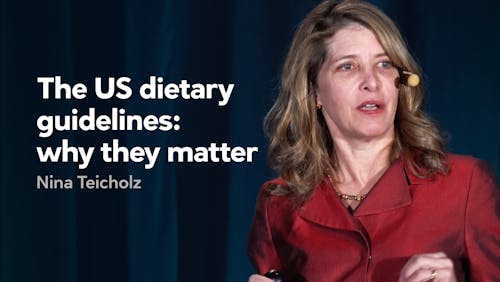
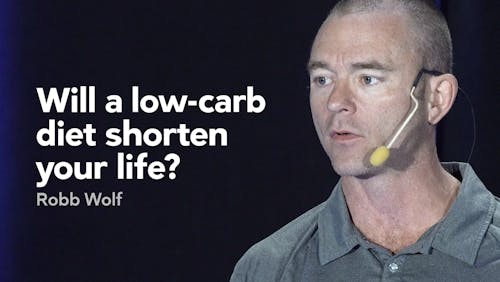
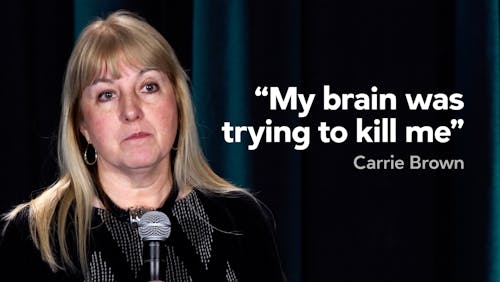
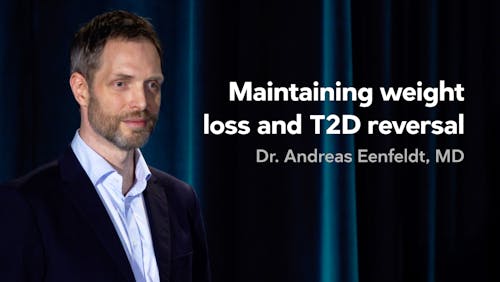
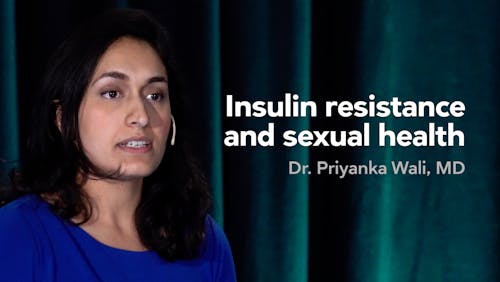
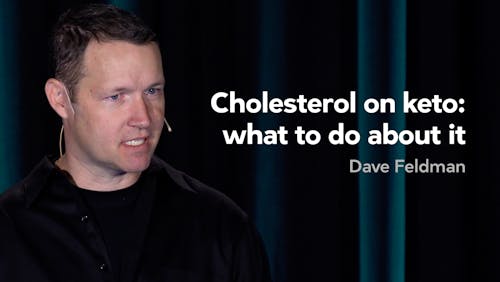



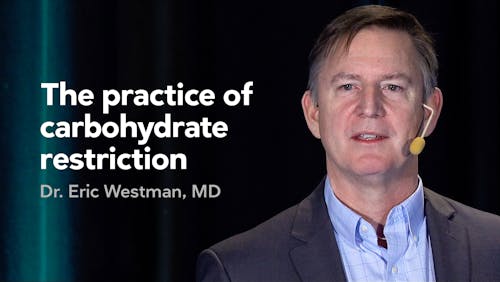

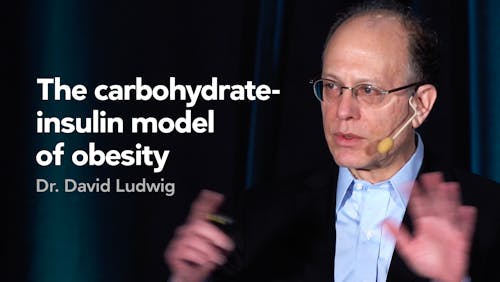
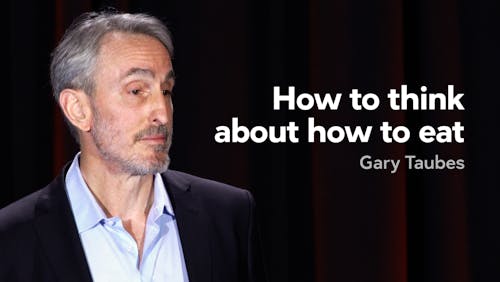
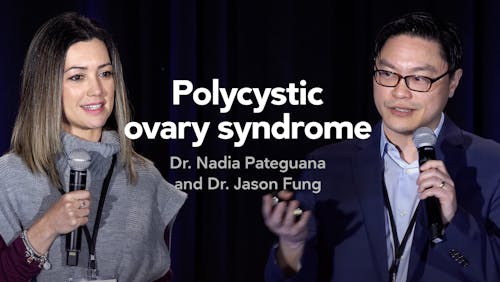

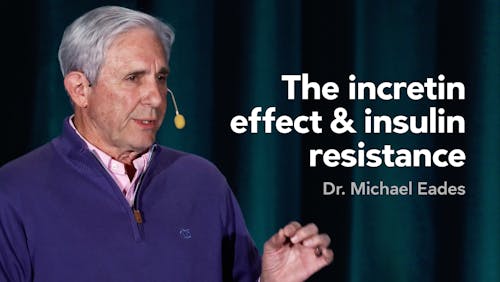
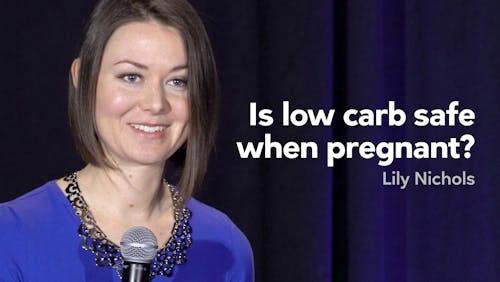
 Courses
Courses





